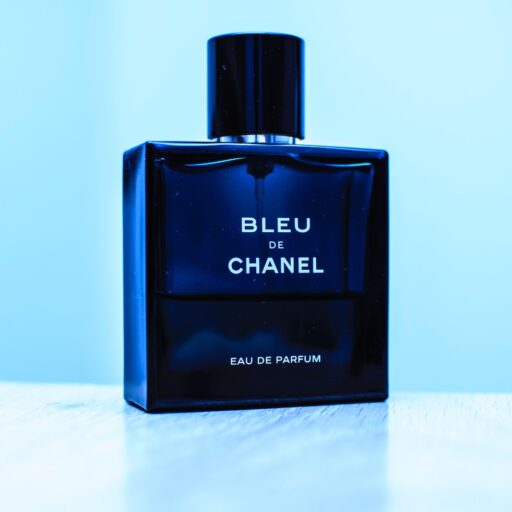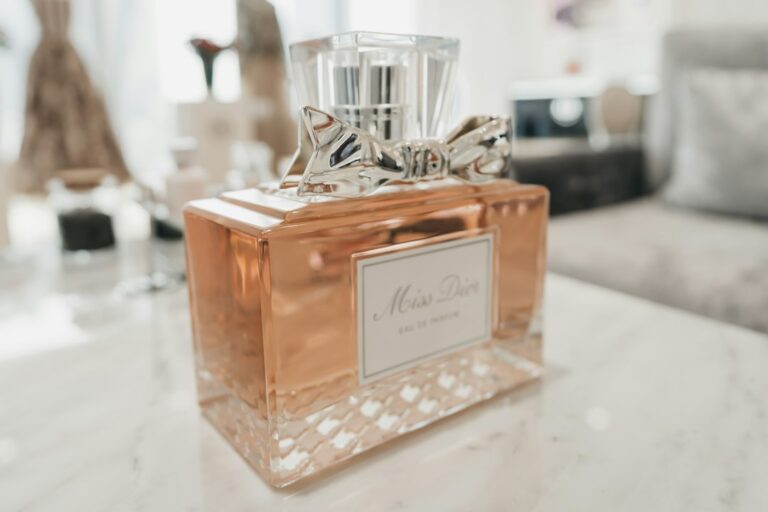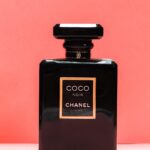Support our educational content for free when you purchase through links on our site. Learn more
The Fragrance Industry: 15+ Secrets Revealed! 🤫
Have you ever wondered about the magic behind your favorite perfume? The world of fragrance is far more complex than just mixing pretty smells; it’s a multi-billion dollar global industry with a rich history, fascinating science, and captivating artistry. Did you know that the creation of a single perfume can involve hundreds of ingredients and years of meticulous work? In this comprehensive guide, we’ll unravel the secrets of the fragrance industry, from its ancient origins to its modern-day innovations, exploring everything from the role of master perfumers to the impact of synthetic scents. We’ll even reveal some little-known facts that will surprise even the most seasoned fragrance enthusiasts! Get ready to embark on an olfactory adventure!
Key Takeaways:
- The fragrance industry is a global powerhouse, encompassing a wide range of products and brands.
- Creating a perfume is a complex process, involving the sourcing of raw materials, the art of blending, and rigorous quality control.
- Master perfumers possess exceptional skills and knowledge, playing a crucial role in shaping the scents we encounter daily.
- Synthetic fragrances are essential to modern perfumery, offering advantages in terms of cost, availability, and control over fragrance characteristics.
- The fragrance industry is constantly evolving, with new trends and innovations emerging all the time. Explore the latest trends and find your perfect scent today! Men’s Perfumes | Luxury Brands | Fragrance Reviews
Table of Contents
Aromatic History: The Evolution of the Fragrance Industry
The Alchemy of Scent: Understanding the Fragrance Creation Process
The Master Perfumer: A Nose for Success
Synthetic Scents: The Unsung Heroes of Modern Perfumery
Unveiling the Secrets: Little-Known Facts About Fragrance Creation
Alpha Aromatics and the Art of Perfume: A Deep Dive
The Business of Fragrance: Marketing, Branding, and Sales
Fragrance Families: Navigating the World of Scents
Top 10 Most Popular Fragrance Ingredients and Their Impact
The Future of Fragrance: Trends and Innovations
Quick Tips and Facts
Did you know the fragrance industry is a multi-billion dollar global market? 🤯 It’s a world of artistry, science, and big business, all wrapped up in a beautiful bottle. Let’s dive into some fascinating facts and quick tips to get you started on your fragrance journey!
- Fragrance families: Learn to identify the main fragrance families (floral, oriental, woody, fresh, etc.) to better understand and appreciate different scents. This will help you navigate the vast world of perfumes! Perfume Guides
- Scent layering: Experiment with layering different fragrances to create unique and personalized scents. Think of it as your own personal olfactory masterpiece!
- Skin chemistry: Your body chemistry plays a significant role in how a fragrance smells on you. What smells amazing on your friend might not be the same on you. It’s all about finding your perfect match!
- Storage: Store your perfumes in a cool, dark place away from direct sunlight to prolong their lifespan. Sunlight can degrade the fragrance molecules, altering the scent.
- Testing: Always test a fragrance on your skin before committing to a full bottle. Spray it on your wrist and wait for a few minutes to see how it develops on your skin.
Aromatic History: The Evolution of the Fragrance Industry
The history of perfume is a captivating journey through time, cultures, and innovations. From ancient civilizations using fragrant resins and oils for religious ceremonies and personal adornment to the sophisticated laboratories of today, the fragrance industry has undergone a remarkable transformation. Did you know that some of the earliest known perfumes date back to ancient Egypt? 🇪🇬 Learn more about the fascinating history of perfume and its evolution into the global industry it is today! Perfume History and Evolution
Ancient Perfumery: A Journey Through Time
The use of fragrances dates back thousands of years. Ancient civilizations like the Egyptians, Romans, and Greeks valued perfumes for religious rituals, medicinal purposes, and personal beautification. They utilized natural ingredients like essential oils, resins, and spices to create their aromatic concoctions. The discovery of ancient perfume recipes in archaeological sites provides a glimpse into the sophisticated techniques employed by these early perfumers.
The Rise of Modern Perfumery: A Scientific Revolution
The 19th and 20th centuries witnessed a significant shift in the fragrance industry with the advent of synthetic fragrances. This allowed perfumers to create a wider range of scents and achieve greater control over the fragrance’s composition and longevity. The development of sophisticated extraction and synthesis techniques revolutionized the industry, paving the way for the mass production of perfumes and the emergence of iconic fragrance brands.
The Fragrance Industry Today: A Global Phenomenon
Today, the fragrance industry is a global powerhouse, with countless brands competing for market share. The industry encompasses a wide range of products, from high-end luxury perfumes to mass-market fragrances, and caters to diverse consumer preferences. The industry’s continued growth is driven by factors such as increasing consumer disposable income, growing awareness of personal care, and the constant innovation in fragrance technology.
The Alchemy of Scent: Understanding the Fragrance Creation Process
Creating a perfume is not just about mixing pretty smells; it’s a complex process that requires artistry, scientific knowledge, and a keen sense of smell. It’s a bit like alchemy, transforming raw ingredients into a captivating olfactory experience. Let’s explore the fascinating steps involved in crafting a perfume.
Sourcing and Selection of Raw Materials
The journey begins with the sourcing of high-quality raw materials. These can range from natural ingredients like essential oils extracted from flowers, fruits, and plants, to synthetic molecules created in laboratories. The selection of these materials is crucial, as it directly impacts the final fragrance’s character and quality. The sourcing process often involves meticulous checks to ensure the purity and authenticity of the ingredients.
The Art of Blending: Creating the Fragrance Composition
Once the raw materials are selected, the perfumer begins the intricate process of blending them together. This involves carefully measuring and combining different ingredients to create a harmonious and balanced fragrance. The perfumer’s expertise lies in their ability to understand how different scents interact with each other and create a unique olfactory profile. This process often involves numerous trials and adjustments before the desired scent is achieved.
Maceration and Aging: Refining the Fragrance
After the initial blend is created, it undergoes a process of maceration and aging. This allows the fragrance to mature and develop its full complexity. During this time, the different scent notes interact and evolve, creating a more nuanced and sophisticated fragrance. The aging process can last for several months or even years, depending on the complexity of the fragrance.
Quality Control and Bottling: Ensuring Excellence
Before the fragrance is ready for market, it undergoes rigorous quality control checks to ensure it meets the highest standards. This includes testing for stability, longevity, and overall scent quality. Once the fragrance passes these checks, it is ready for bottling and packaging. The final product is a testament to the artistry, science, and dedication involved in the perfume creation process.
The Master Perfumer: A Nose for Success
Becoming a master perfumer is a journey that demands passion, dedication, and an exceptional sense of smell. It’s not just about having a good nose; it’s about possessing a unique blend of artistic talent and scientific knowledge. Let’s explore the world of master perfumers, their training, and the skills that make them masters of their craft.
The Training and Education of a Perfumer
Aspiring perfumers typically undergo rigorous training, often involving years of study and apprenticeship under experienced perfumers. This training encompasses a wide range of topics, including chemistry, botany, and sensory evaluation. Perfume schools and apprenticeships provide a structured learning environment where aspiring perfumers can hone their skills and develop their creative abilities.
The Skills and Qualities of a Master Perfumer
Master perfumers possess a unique combination of skills and qualities that set them apart. These include an exceptional sense of smell, a deep understanding of fragrance chemistry, and a creative flair for blending different scents. They also possess strong analytical skills, allowing them to deconstruct complex fragrances and identify their individual components. Their ability to translate abstract ideas into tangible olfactory experiences is what makes them true masters of their craft.
The Role of a Master Perfumer in the Fragrance Industry
Master perfumers play a crucial role in the fragrance industry, shaping the scents that we encounter daily. They work closely with fragrance houses and brands to develop new fragrances, reformulate existing ones, and ensure the quality and consistency of their products. Their creative input is essential in defining the olfactory identity of a brand and appealing to a wide range of consumer preferences. They are the architects of our olfactory experiences, shaping how we perceive and interact with the world around us. Want to know more about fragrance houses? Check out this article: What Is a Fragrance House? 12 Secrets You Didn’t Know! 🏰 (2025) https://www.perfumebrands.org/what-is-a-fragrance-house/
Synthetic Scents: The Unsung Heroes of Modern Perfumery
Synthetic fragrances often get a bad rap, but they’re actually essential to modern perfumery. They allow perfumers to create a vast array of scents that would be impossible or impractical to obtain solely from natural sources. Let’s explore the role of synthetic fragrances and dispel some common misconceptions.
The Importance of Synthetic Fragrances in Modern Perfumery
Synthetic fragrances offer several advantages over their natural counterparts. They can be more cost-effective to produce, more readily available, and offer greater control over the fragrance’s characteristics, such as longevity and projection. They also allow perfumers to create unique and complex scents that would be difficult or impossible to achieve using only natural ingredients.
Common Misconceptions About Synthetic Fragrances
One common misconception is that synthetic fragrances are inherently inferior to natural ones. This is not necessarily true. Many high-quality synthetic fragrances are meticulously crafted to mimic the complexity and nuance of natural scents, and some even surpass them in terms of longevity and projection. Another misconception is that synthetic fragrances are harmful to health. While some synthetic ingredients can cause allergic reactions in sensitive individuals, most synthetic fragrances used in commercially available perfumes are rigorously tested and comply with strict safety regulations.
The Future of Synthetic Fragrances in Perfumery
The future of synthetic fragrances in perfumery is bright. As technology advances, perfumers will continue to develop new and innovative synthetic molecules, expanding the possibilities of fragrance creation. This will lead to even more complex, nuanced, and captivating scents, pushing the boundaries of olfactory art.
Unveiling the Secrets: Little-Known Facts About Fragrance Creation
The world of fragrance creation is full of fascinating secrets and surprising facts. Let’s uncover some little-known aspects of this captivating industry.
- The role of the “nose”: A perfumer’s sense of smell is their most valuable tool. They undergo rigorous training to develop and refine their olfactory abilities.
- The importance of aging: Many fragrances are aged for months or even years to allow the scent to mature and develop its full complexity.
- The art of layering: Layering different fragrances can create unique and personalized scents.
- The impact of skin chemistry: The way a fragrance smells on you depends on your individual body chemistry.
- The science of scent: Fragrance creation involves a blend of art and science, requiring a deep understanding of chemistry and sensory perception.
- The environmental impact: The fragrance industry is increasingly focused on sustainability and reducing its environmental footprint.
- The regulatory landscape: The production and sale of fragrances are subject to strict regulations to ensure safety and quality.
- The power of marketing: The success of a fragrance often depends on effective marketing and branding.
These are just a few of the many fascinating aspects of fragrance creation. The industry is constantly evolving, with new innovations and trends emerging all the time.
Alpha Aromatics and the Art of Perfume: A Deep Dive
Alpha Aromatics is a prominent player in the fragrance industry, known for its high-quality ingredients and innovative fragrance solutions. Let’s delve into their contributions to the art of perfume.
Alpha Aromatics’ Role in the Fragrance Industry
Alpha Aromatics provides a wide range of fragrance ingredients and solutions to various industries, including cosmetics, personal care, and home fragrance. They work closely with perfumers and brands to develop unique and captivating scents. Their expertise in fragrance creation and their commitment to quality have made them a trusted partner in the industry.
Alpha Aromatics’ Commitment to Sustainability
Alpha Aromatics is committed to sustainability and responsible sourcing. They strive to minimize their environmental impact and promote ethical practices throughout their supply chain. Their dedication to sustainability is reflected in their commitment to using eco-friendly ingredients and reducing waste.
Alpha Aromatics’ Innovation in Fragrance Technology
Alpha Aromatics is at the forefront of innovation in fragrance technology. They continuously invest in research and development to create new and exciting fragrance solutions. Their commitment to innovation has led to the development of unique and high-performing fragrances that meet the evolving demands of the market.
The Business of Fragrance: Marketing, Branding, and Sales
The fragrance industry isn’t just about beautiful scents; it’s a complex business with intricate marketing, branding, and sales strategies. Let’s explore the business side of this captivating world.
The Importance of Branding in the Fragrance Industry
Branding plays a crucial role in the success of a fragrance. A strong brand identity helps to differentiate a fragrance from its competitors and create a sense of exclusivity and desirability. Effective branding involves creating a unique brand story, visual identity, and messaging that resonates with the target audience.
Marketing Strategies for Fragrance Products
Marketing strategies for fragrances often involve a multi-channel approach, utilizing various platforms to reach the target audience. These can include print advertising, digital marketing, social media campaigns, influencer collaborations, and in-store promotions. Effective marketing campaigns aim to create an emotional connection with consumers, associating the fragrance with specific feelings, memories, or lifestyles.
Sales and Distribution Channels for Fragrances
Fragrances are sold through a variety of channels, including department stores, specialty boutiques, online retailers, and direct-to-consumer websites. The choice of distribution channels depends on the brand’s target audience and marketing strategy. Effective sales strategies involve creating a positive customer experience and building strong relationships with retailers and consumers.
Fragrance Families: Navigating the World of Scents
Navigating the vast world of fragrances can be overwhelming. Understanding fragrance families can simplify the process and help you find your perfect scent.
| Fragrance Family | Key Characteristics | Examples |
|---|---|---|
| Floral | Delicate, romantic, feminine | Rose, jasmine, lily of the valley |
| Oriental | Warm, spicy, sensual | Amber, vanilla, cinnamon |
| Woody | Earthy, masculine, sophisticated | Sandalwood, cedar, vetiver |
| Fresh | Clean, invigorating, uplifting | Citrus, green, aquatic |
| Fougère | Aromatic, mossy, herbal | Lavender, oakmoss, bergamot |
| Leather | Rich, smoky, intense | Leather, tobacco, oud |
Top 10 Most Popular Fragrance Ingredients and Their Impact
Certain fragrance ingredients consistently appear in popular perfumes due to their unique olfactory properties and widespread appeal. Let’s explore ten of the most popular ingredients and their impact on fragrance compositions.
- Rose: Known for its romantic and feminine aroma, rose is a classic ingredient in countless perfumes.
- Jasmine: Possessing a rich, intoxicating scent, jasmine adds depth and complexity to many fragrances.
- Lavender: With its calming and soothing properties, lavender is often used in relaxing and therapeutic fragrances.
- Vanilla: A warm, sweet, and comforting scent, vanilla is a staple in oriental and gourmand fragrances.
- Sandalwood: Known for its creamy, woody aroma, sandalwood adds a touch of sophistication and elegance.
- Amber: A warm, resinous scent, amber adds depth and complexity to many fragrances.
- Musk: A sensual and animalic scent, musk adds a touch of mystery and allure.
- Bergamot: A refreshing and uplifting citrus scent, bergamot is often used in fresh and invigorating fragrances.
- Cedarwood: A woody and earthy scent, cedarwood adds a touch of masculinity and sophistication.
- Patchouli: A warm, earthy, and slightly musky scent, patchouli is often used in bohemian and earthy fragrances.
The Future of Fragrance: Trends and Innovations
The fragrance industry is constantly evolving, with new trends and innovations emerging all the time. Let’s explore some of the key trends shaping the future of fragrance.
- Sustainability: The industry is increasingly focused on sustainable practices, using eco-friendly ingredients and reducing its environmental impact.
- Personalization: Consumers are demanding more personalized fragrance experiences, leading to the rise of customized and bespoke fragrances.
- Technology: Technology is playing an increasingly important role in fragrance creation, from advanced extraction techniques to virtual scent experiences.
- Inclusivity: The industry is becoming more inclusive, offering a wider range of fragrances to cater to diverse preferences and identities.
- Clean Beauty: Consumers are increasingly seeking fragrances made with natural and non-toxic ingredients.
Conclusion
So, there you have it – a deep dive into the fascinating world of the fragrance industry! From its ancient roots to its modern-day innovations, the journey of perfume is a captivating blend of art, science, and commerce. We’ve explored the artistry of master perfumers, the science behind synthetic scents, and the business acumen required to navigate this competitive market. Remember, your own unique body chemistry plays a crucial role in how a fragrance unfolds on your skin – so don’t be afraid to experiment and find your signature scent! We hope this comprehensive guide has answered all your questions and ignited your passion for the world of fragrance. Now go forth and explore the wonderful world of scents! ✨
Recommended Links
This section provides links to explore further and shop for products mentioned.
👉 Shop Alpha Aromatics on: Alpha Aromatics Official Website
Recommended Books on Amazon:
- Perfume: The Story of a Murderer: Amazon Search Results
- The Perfume Collector: Amazon Search Results
FAQ
What are the different types of fragrance concentrations used in the perfume industry?
The perfume industry uses several fragrance concentrations, each with a different percentage of perfume oils and thus varying longevity and intensity:
- Parfum (Extrait de Parfum): The most concentrated form, typically containing 20-30% perfume oils. It offers the longest longevity and strongest projection.
- Eau de Parfum (EDP): A popular choice, containing 15-20% perfume oils. It provides a good balance of longevity and intensity.
- Eau de Toilette (EDT): Lighter than EDP, containing 5-15% perfume oils. It offers moderate longevity and projection.
- Eau de Cologne (EDC): The lightest concentration, containing 2-4% perfume oils. It has a subtle scent and shorter longevity.
- Eau Fraîche: Even lighter than EDC, with a lower concentration of perfume oils. It’s often used for refreshing scents.
How do these concentrations affect the price?
Generally, the higher the concentration of perfume oils, the higher the price. Parfum is typically the most expensive, followed by EDP, EDT, EDC, and Eau Fraîche.
How do perfume brands create unique and distinctive scents for their products?
Perfume brands create unique scents through a meticulous process involving several key steps:
- Concept Development: The process begins with a concept, often inspired by a theme, emotion, or ingredient.
- Ingredient Selection: Master perfumers select high-quality ingredients, including natural essential oils and synthetic molecules, to achieve the desired scent profile.
- Blending: The perfumer meticulously blends the selected ingredients, carefully adjusting the proportions to create a harmonious and balanced fragrance.
- Testing and Refinement: The fragrance undergoes rigorous testing and refinement to ensure its quality, longevity, and overall appeal.
- Marketing and Branding: The final fragrance is carefully marketed and branded to create a unique identity and appeal to the target audience.
What role does the perfumer play?
The perfumer is the heart of the process, possessing the artistic skill and scientific knowledge to create unique and captivating fragrances.
What is the process of fragrance creation and development in the perfume industry?
The process of fragrance creation and development is a complex and iterative one, involving several key stages:
- Briefing: The perfumer receives a brief outlining the desired scent profile, target audience, and marketing objectives.
- Research and Development: The perfumer researches and selects appropriate ingredients, considering their olfactory properties, cost, and availability.
- Formulation: The perfumer creates a fragrance formula by blending the selected ingredients in precise proportions.
- Testing and Evaluation: The fragrance undergoes rigorous testing and evaluation to assess its quality, longevity, and overall appeal.
- Refinement: The perfumer refines the fragrance formula based on the testing results, making adjustments to achieve the desired scent profile.
- Production: Once the fragrance formula is finalized, it is produced on a larger scale.
- Quality Control: Rigorous quality control measures are implemented to ensure consistency and quality throughout the production process.
What are the challenges in fragrance creation?
Challenges include balancing artistic vision with commercial viability, ensuring ingredient sustainability, and meeting regulatory requirements.
What are some of the most popular and well-known perfume brands in the fragrance industry?
The fragrance industry boasts a vast array of popular and well-known brands, catering to diverse tastes and preferences. Some of the most prominent include Chanel, Dior, Yves Saint Laurent, Tom Ford, Gucci, and many more. Each brand has its own unique identity and style, reflecting its history, heritage, and target audience.
How do brands differentiate themselves?
Brands differentiate themselves through unique scent profiles, marketing strategies, and brand storytelling.
Reference Links
- Alpha Aromatics: Alpha Aromatics Official Website
- IFRA (International Fragrance Association): IFRA Website (for information on fragrance safety and regulations)
- How Perfume Is Made – A Master Perfumers’ Industry Guide: Alpha Aromatics Blog Post






